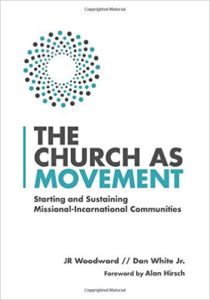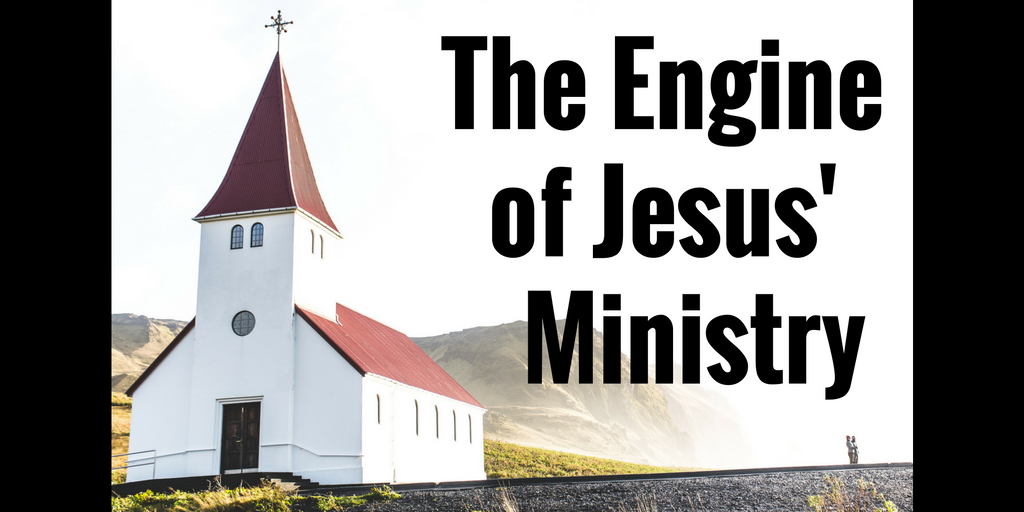When it comes to discipleship, most of our churches follow the methods and ways of traditional learning. We teach classes, launch programs, or go through sermon series to cover an area of discipleship.
While information is a part of the process of discipleship, it is incomplete as a whole to help us learn and practice the ways of Jesus.
Discipleship was the engine of Jesus’ ministry. It is where he spent the most time and energy. His discipleship was in the context of face-to-face relationships with a small number of people.
[Tweet “Discipleship was the engine of Jesus’ ministry. @DebSternke”]
The disciples were invited into an intentional relationship with Jesus to learn what he knew and discover who he was. Jesus’ final words to the church were to go and make disciples: to do the same as he did, reproduce and pass on what had been invested in them. As followers of Jesus, we all have this call to discipleship.
The Center of Church Planting
Chapter four of The Church as Movement is about making disciples and why doing so needs to be central to your church planting process from the very beginning.
Woodward and White explain, “At the center of church as movement is learning how to be disciples and make disciples.”
The authors begin by looking at how Jesus discipled others – using him as their model. From this place, they share tools and content to help us move into a more complete process when it comes to making disciples. By giving us a vision and practical handlebars for this process, we can learn how t0 create safe spaces for people to be who they are while stretch them towards the narrow way of Jesus.
Woodward and White define discipleship as “a move towards accountability and vulnerability to learn and practice the way of Jesus on mission.”
For the church planter, this often begins within the context of gathering a core team. This essential section of the book dives into some important things you will need, from tools to help you discern whom to invite into the core team, to the importance of creating a space that is safe as well as stretching, to the four phases that your core team will go through (each very important!). There is even a tool to help us pay attention to and process the moments where God is at work in our lives.
Missional Words to Live By
Here are a few of my favorite quotes from this chapter (so hard to pick just a few!):
Merely transferring spiritual information can inoculate us to on-the-ground practice. Practice is being formed and informed by the bumps, bruises and baptism of application…this is being a Jesus follower.
True learning doesn’t take place until we learn experientially. And experiential learning often starts with someone modeling what we are to do.
We must engage the relational work of cultivating disciples in community.
Jesus was an expert at asking questions that challenged people’s underlying assumptions. We would do good to model this in our discipleship process.
We are shaped by experiencing deep, abiding safety, where we are loved as we are while simultaneously being loved enough to be invited into transformation, mission and doing some challenging things.
Each stage [of the phases of a discipleship core] brings certain challenges that have to be faced, worked through and resolved if the group is going to survive.
Disruptive moment[s]…call us to respond to God’s invitation…and we are challenged to listen.
Who you invite to become part of the discipleship core is one of the first and most far-reaching decisions you will have to make as you start a missional-incarnational community.
As someone who is currently in the midst of church planting, I highly recommend Church as Movement for anyone wanting to learn how to be a disciple of Jesus and make disciples as he did. It is a must-read for those wanting to start and sustain missional-incarnational communities.
[Tweet “A must-read for those wanting to start and sustain missional-incarnational communities…”]

Discover Missional-Incarnational Church Planting Partnerships!
Disclosure of Material Connection: I received this book free from the publisher. I was not required to write a positive review. The opinions I have expressed are my own. I am disclosing this in accordance with the Federal Trade Commission’s 16 CFR, Part 255: “Guides Concerning the Use of Endorsements and Testimonials in Advertising.”
Share this Post

